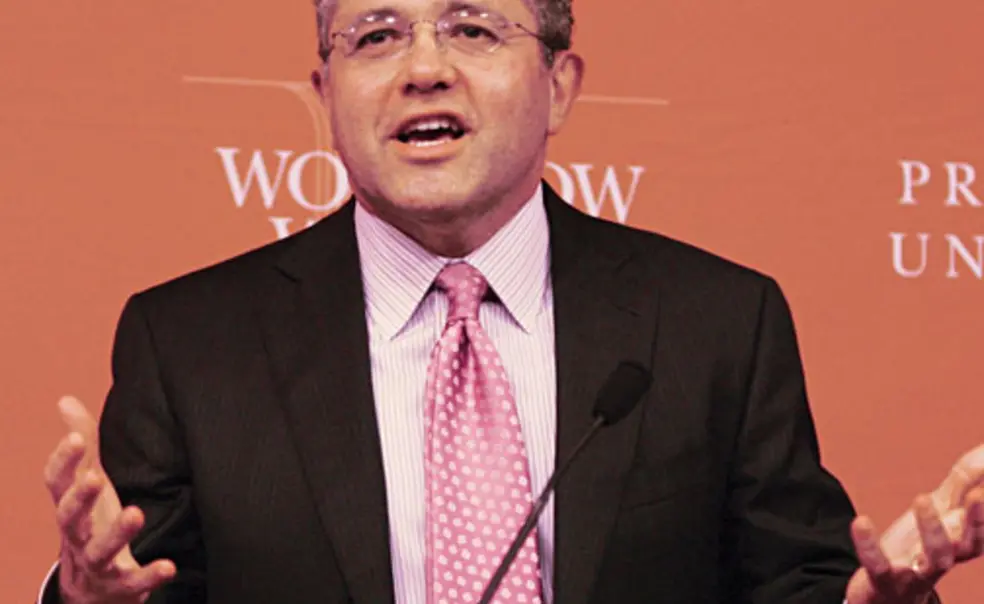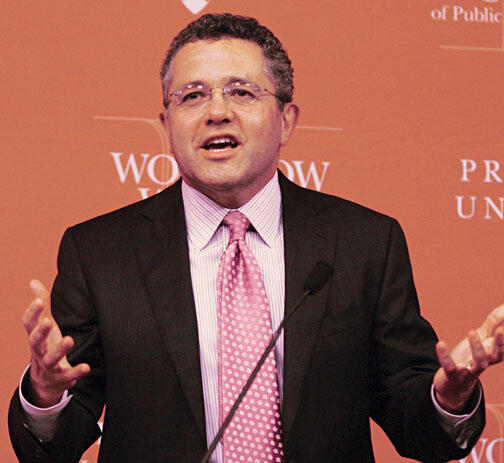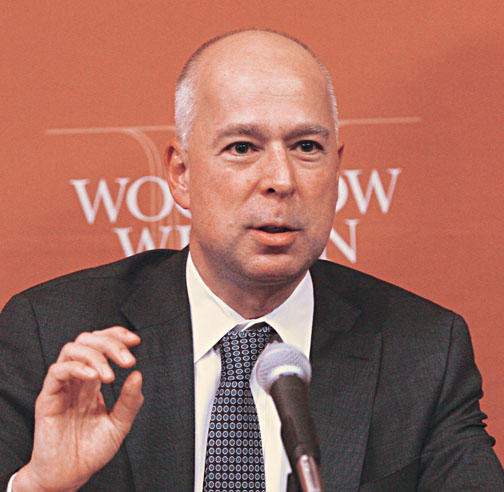Verdict on court nominee hearings: Not very helpful
Highly scripted and dull Senate confirmation hearings for Supreme Court nominees have been the norm since Robert Bork’s failed nomination in 1987 — and Sonia Sotomayor ’76 maintained that sorry tradition, journalists said during a Nov. 11 panel discussion on the court and the media.
Sotomayor — now Associate Justice Sotomayor — “was asked what her judicial philosophy was and she said, ‘I follow the law,’” CNN legal analyst Jeffrey Toobin told a packed Dodds Auditorium in Robertson Hall. “What a cynical view of the confirmation process.”
Toobin said it was important to know Sotomayor’s judicial philosophy because it usually explains why justices think differently on constitutional issues. “‘Following the law’ is not a judicial philosophy; it’s an excuse not to answer questions,” said Toobin, who also writes for The New Yorker.
The panel, which was sponsored by the Program in Law and Public Affairs, included New York Times correspondent Adam Liptak and Slate.com senior editors Dahlia Lithwick and Emily Bazelon.
Liptak echoed Toobin, criticizing Sotomayor’s statement during her testimony that Supreme Court justices simply take the law, apply it to the facts, and repeat the process. “It was really, even by standards of confirmation hearings, a low point,” Liptak said.
He drew a contrast with Chief Justice John Roberts’ confirmation hearings in 2005. “You got some sense of at least what a first-rate intellect he has, and we just didn’t see that [with Sotomayor],” Liptak said.
Panelists also discussed the constraints and problems of covering the Supreme Court.
Lithwick said the media tend to write only two types of stories about the Supreme Court — one saying that the court is fundamentally a political institution, and the other that the court is not. “The reason that we’re so utterly schizophrenic in telling both story one and story two about the court is because both are absolutely true,” she said.
Lithwick said editors like the first type of coverage because “it’s a horse race. You’ve got four versus four. You’ve got [Justice] Kennedy in the middle. It’s like Clue. We all sit and watch ... ‘Which way is he going to go?’”
Liptak also critiqued what he believes is the media’s over-coverage of the high court. “We spend much too much time thinking about the Supreme Court,” he said, pointing out that important lower-court decisions rarely are covered.














No responses yet